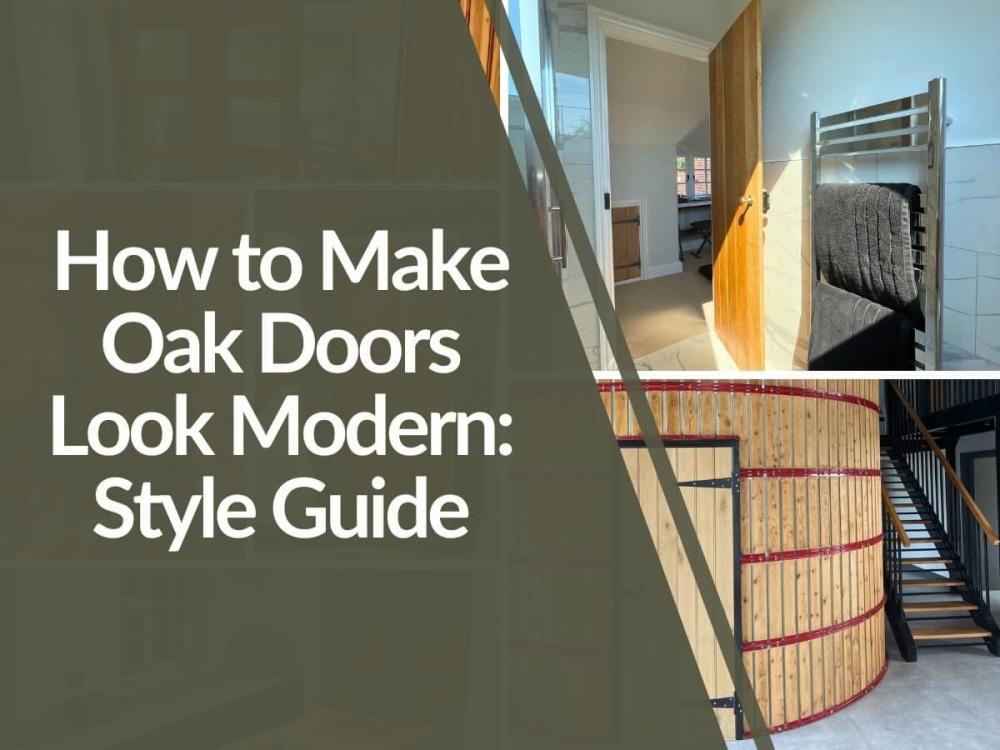The Artistry of Oak Skirting and Architrave
Summary Table of Key Takeaways
| Key Points | Description |
| Material Choice | Solid oak is the gold standard for durability and aesthetic appeal. |
| Design Styles | Oak skirting and architrave fit both traditional and modern home designs. |
| Installation | Professional installation is recommended, especially for bespoke designs. |
| Maintenance | Oak requires minimal upkeep; regular cleaning and occasional polishing suffice. |
| Cost | Initial cost is high but it's a long-term investment with low maintenance costs. |
| Where to Buy | Trusted sources like UK Oak Doors offer quality options. |
| FAQs | Oak is durable, can be painted or stained, and professional installation is advised. |
Introduction
Welcome to the world of oak skirting and architrave, where functionality meets artistry. In this comprehensive guide, we'll delve into the nitty-gritty of these essential interior design elements. Whether you're a homeowner or an interior designer, this article will serve as your ultimate guide.
The Basics of Skirting and Architrave
What Are They?
Skirting and architrave are more than just decorative elements; they serve practical purposes too. Skirting boards run along the base of your walls, while architrave frames your doors and windows.
Why Oak?
Oak is the go-to material for many, and for good reasons. It's durable, aesthetically pleasing, and versatile. Whether you're going for a traditional or modern look, oak fits right in.
| Material | Durability | Aesthetic Appeal |
| Oak | High | High |
| Pine | Medium | Low |
| MDF | Low | Medium |
The Functionality Aspect
Oak skirting and architrave offer a plethora of functional benefits. They act as a protective barrier between the wall and floor, safeguarding against scuffs and dents. Oak's natural properties make it resistant to moisture and warping, ensuring your investment is long-lasting.
- Installation: The initial setup can be a significant cost factor, especially if you opt for bespoke designs.
- Maintenance: Oak requires minimal upkeep, which translates to cost savings in the long run.
Material Cost: Quality oak can be an investment but consider it money well spent.
Types of Oak Skirting and Architrave
Solid Oak: The Gold Standard
When it comes to skirting and architrave, solid oak is the undisputed champion. It's the epitome of luxury, durability, and aesthetic appeal. Whether you're looking to elevate a traditional home or add a touch of class to a modern space, solid oak is your go-to choice.
- Durability: Solid oak is built to last, making it ideal for high-traffic areas and commercial spaces.
- Aesthetic Appeal: The natural grain and rich texture of solid oak add a layer of sophistication to any room.
- Ease of Installation: While solid oak may require professional installation, the end result is worth the effort.
- Maintenance: A little goes a long way. Occasional oiling can keep your oak skirting and architrave looking brand new.
- Cost: While solid oak comes at a premium, consider it a long-term investment in your home's aesthetic and functional value.
Customisation Options
One of the best things about solid oak is its versatility. You can customise it to suit your specific needs, be it the design, size, or finish. From bespoke designs to intricate detailing, the sky's the limit.
| Customisation Option | Description |
| Design | Choose from a range of designs to match your interior. |
| Size | Custom sizes to fit any doorway or wall. |
| Finish | Opt for pre-finished or unfinished, ready for your personal touch. |
Design Styles
The Timeless Appeal of Traditional Styles
Oak skirting and architrave have long been a staple in traditional homes. Their intricate designs and rich textures perfectly complement Victorian and Georgian interiors.
- Traditional: Ideal for homes with a classic, timeless aesthetic.
- Contemporary: Perfect for modern homes that value simplicity and clean lines.
- Modern: For those who want to push the boundaries of design.
The Modern Twist
If you're more inclined towards a contemporary or modern aesthetic, fear not. Oak skirting and architrave can be as sleek and minimalistic as you desire. They can seamlessly blend into modern interiors, providing a subtle yet impactful design element.
Installation Tips
Installing oak skirting and architrave might seem daunting, but it doesn't have to be. With the right tools and some handy tips, you can ensure a smooth installation process. For those who aren't DIY-savvy, professional installation is always an option, especially for bespoke designs.
- Preparation: Make sure the walls and floors are clean and even.
- Measurements: Accurate measurements are crucial for a seamless fit.
- Tools: Have all your tools ready — saw, nails, hammer, and paints or oils for finishing.
Maintenance and Care
Oak skirting and architrave are relatively low-maintenance, but a little care can go a long way in preserving their beauty.
- Cleaning: Regular dusting and occasional mopping keep them looking new.
- Polishing: A little polish can add a fresh shine.
- Repair: Minor dents and scratches can be easily fixed with a simple sanding and refinishing process.
| Maintenance Activity | Frequency |
| Cleaning | Weekly |
| Polishing | Quarterly |
| Repair | As needed |
Cost Considerations
The Investment Worth Making
Solid oak skirting and architrave may come with a higher price tag, but they're an investment in your home's aesthetic and functional value. The durability and timeless appeal of oak make it a cost-effective choice in the long run.
- Initial Cost: While the upfront cost can be significant, especially for bespoke designs, it's a one-time investment.
- Maintenance Cost: Given that oak requires minimal maintenance, you'll save on upkeep costs over time.
- Resale Value: Quality oak skirting and architrave can increase your home's resale value.
| Cost Factor | Importance |
| Initial Cost | High |
| Maintenance | Low |
| Resale Value | Medium |
Where to Buy
Trusted Sources
When it comes to buying oak skirting and architrave, it's crucial to go for trusted sources that offer quality products. At UK Oak Doors, we provide a wide range of options to suit various styles and budgets.
- Online Stores: Convenient but ensure they offer quality guarantees.
- Physical Stores: You get to see and feel the product before purchasing.
- Custom Orders: For those looking for something unique, bespoke options are available.










